What is the “Artillery Luger”?
January 4th, 2021
6 minute read
Certain names are indelibly burned into the foundations of the modern gun world. Kalashnikov made a few rifles, while Stoner’s radical black gun has ably served American troops for more than half a century. And you might have heard of a certain fellow named John Moses Browning. But we must not forget about Georg Luger.
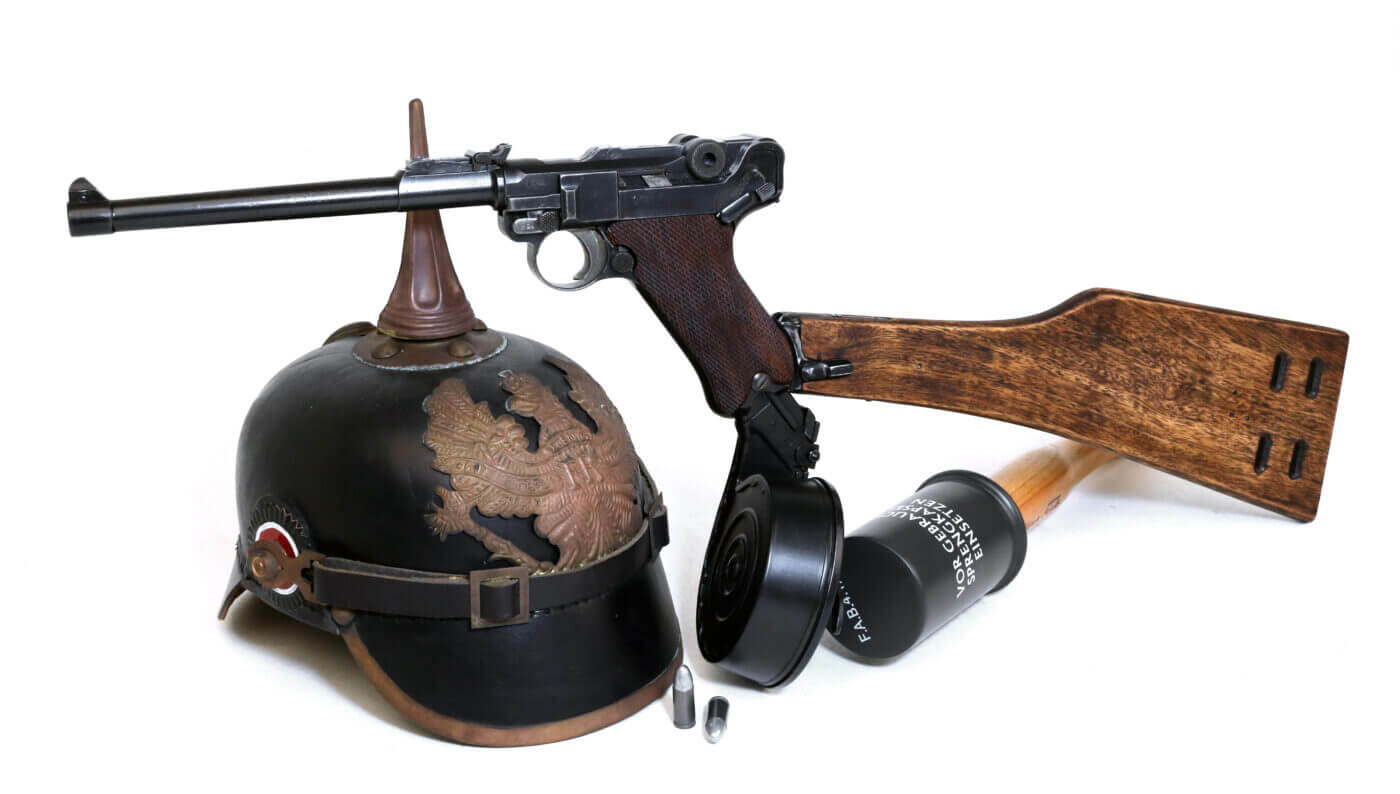
Towering Teuton
Georg Johann Luger was born in 1849 in Steinach am Brenner, Tyrol, and raised in Italy. He was trained as an accountant. Luger volunteered for military service in 1867 and found that he had a knack for marksmanship. This awakened a latent gift for firearms design.
While in the employ of Ludwig, Loewe, and Company, Georg travelled to the United States in 1894 to demonstrate the radical Borchardt-Selbstladepistole C-93 to the U.S. Army. Uncle Sam had little interest in the complex and finicky Borchardt gun, but Herr Luger came home with their documented criticisms prepared to do better. Using the C-93 Borchardt as a starting point, Luger crafted the improved Parabellum pistol that he successfully patented in 1898.
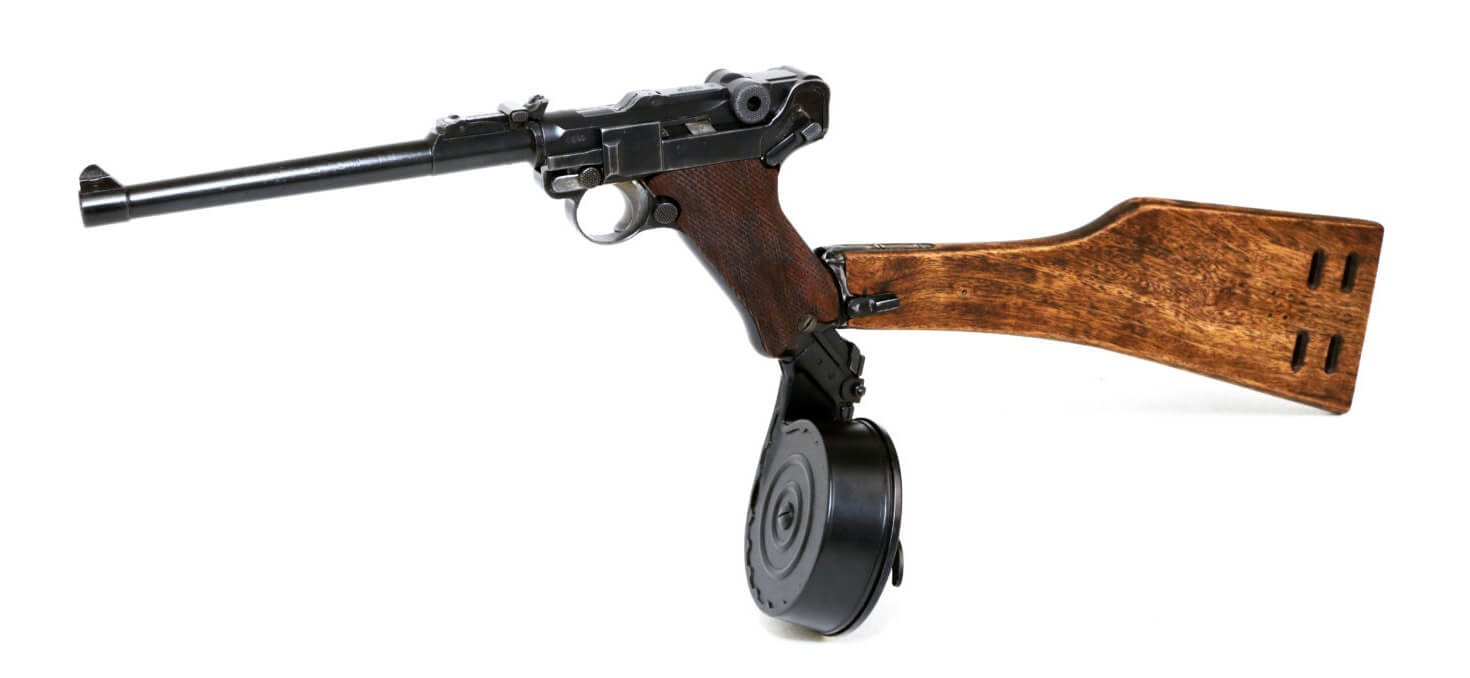
While Herr Luger was working on his Parabellum pistol he also designed the 9x19mm cartridge it typically fired. This modest rimless round ultimately became the most produced handgun cartridge in human history. Modern bullet design has made the 9mm the world’s most common defensive pistol round even more than a century after its introduction. Not bad for a guy trained in accounting.
Switzerland was the first military customer for Luger’s radical Parabellum pistol in 1900. The Kaiser’s Navy bought the gun in 1903. The German Army followed suit in 1908.
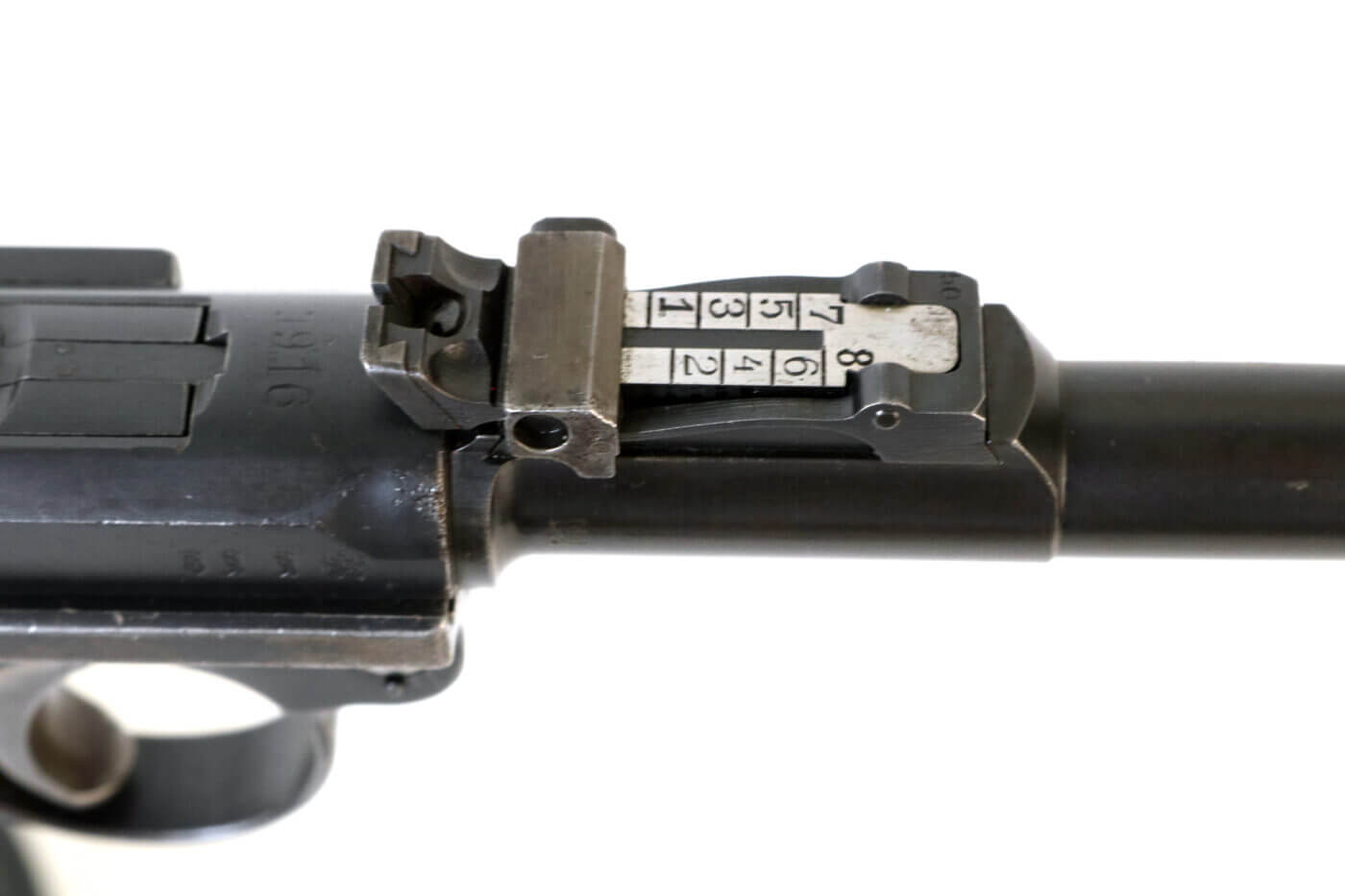
The Parabellum pistol briefly had a shot at becoming the standard U.S. Army combat handgun. In 1907, Herr Luger provided a pair of Parabellum pistols chambered in .45 ACP along with 746 handloaded .45 ACP cartridges to compete against the 1911 and Savage offerings. Luger eventually pulled his guns, and the 1911 obviously won the day. That first .45 ACP Luger was purportedly destroyed during testing. The second is supposedly in private hands today and is potentially the most valuable collectible handgun on the planet.
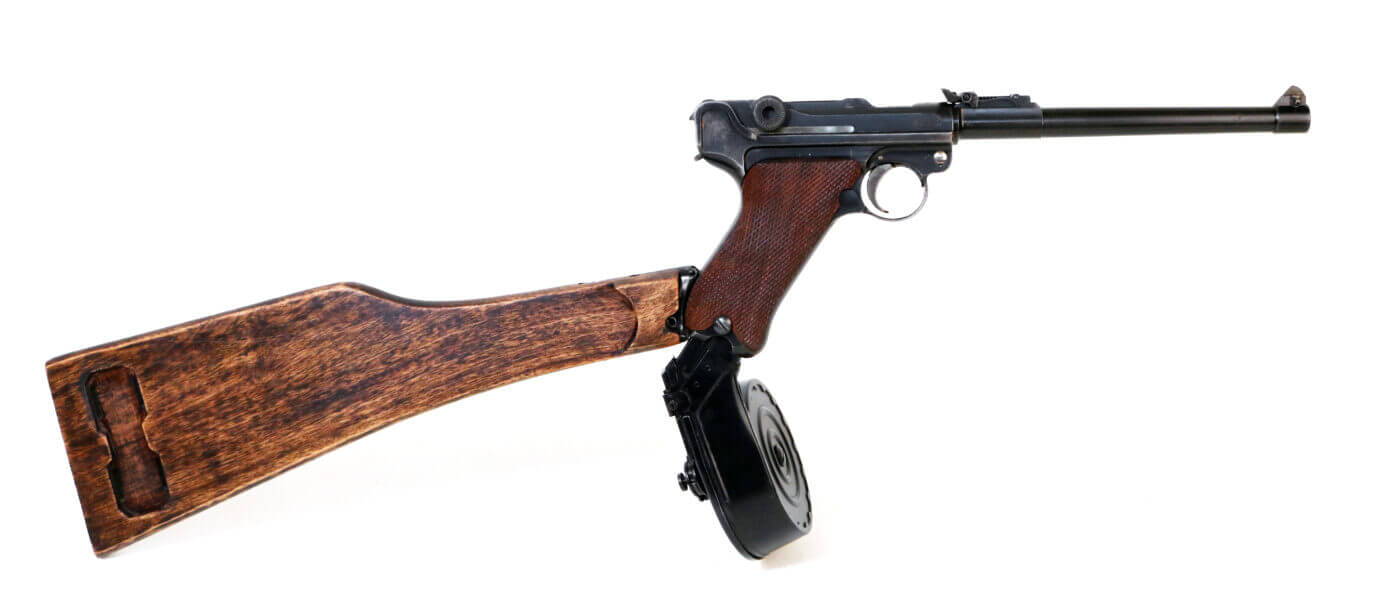
A Specialist’s Weapon
In July of 1913, the Kaiser himself authorized the development of the Lange Pistole 08, or LP08. The new design effort was spearheaded by a German Army officer named CPT Adolf Fischer. This modified Parabellum pistol sported a 7.9″ barrel, an eight-position ramp-adjustable rear sight and a detachable board-type shoulder stock. The world came to know the LP08 as the Artillery Luger.
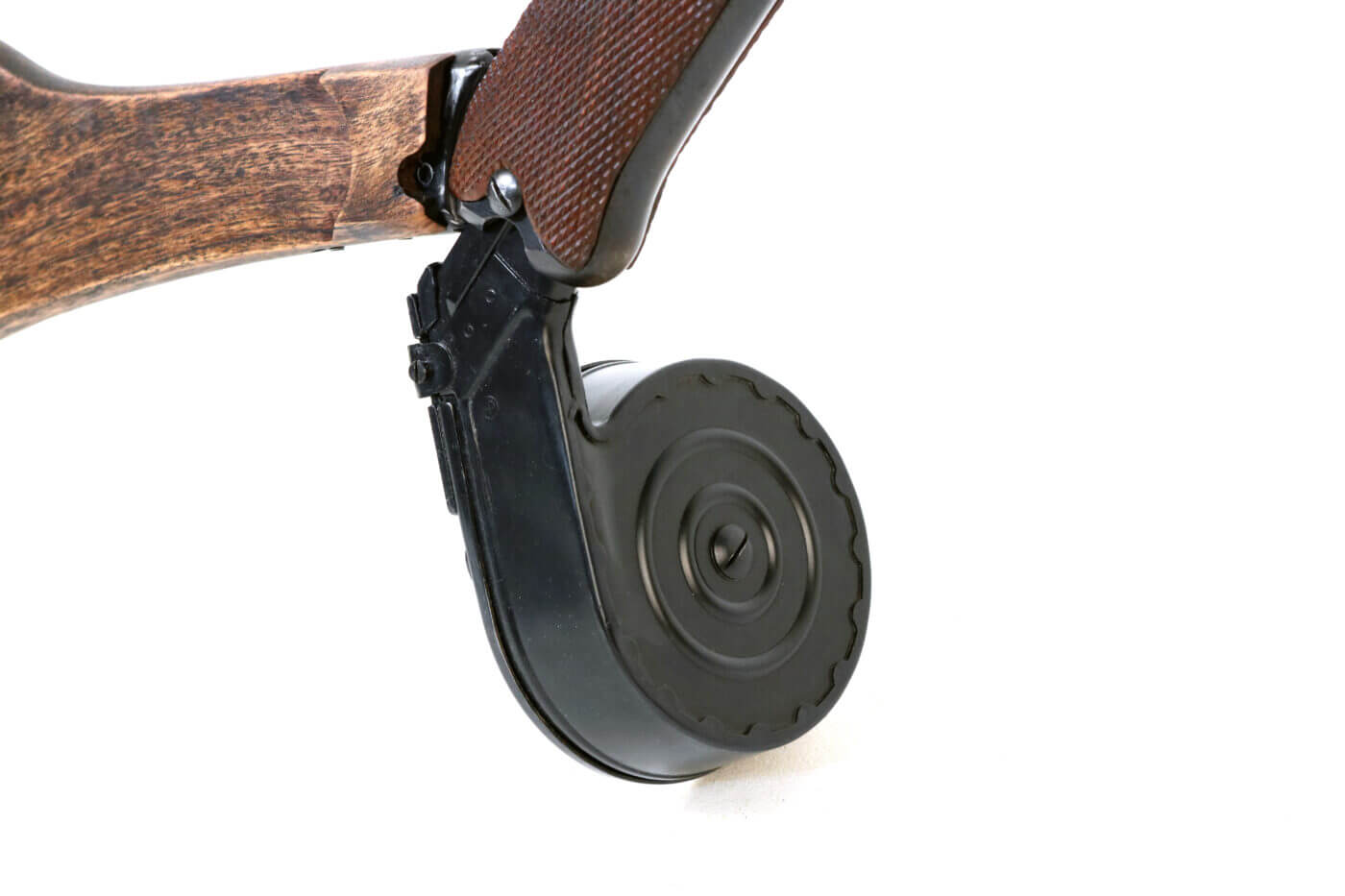
The Artillery Luger was an amazing piece of work. The rear sight, for instance, incorporates a cam mechanism that moves the assembly left as the unit is elevated to compensate for spin drift of the 9mm round at long ranges. That’s pretty ridiculous given that this round drops 35 feet at 500 meters, but it is mechanically fascinating, nonetheless.
The Artillery Luger draws its name from its intended mission. Artillery crews had their hands full servicing their field pieces and required a compact weapon that wouldn’t interfere with their primary duties. Should their positions be threatened, however, they could bring their little Luger carbines into action in the close fight.
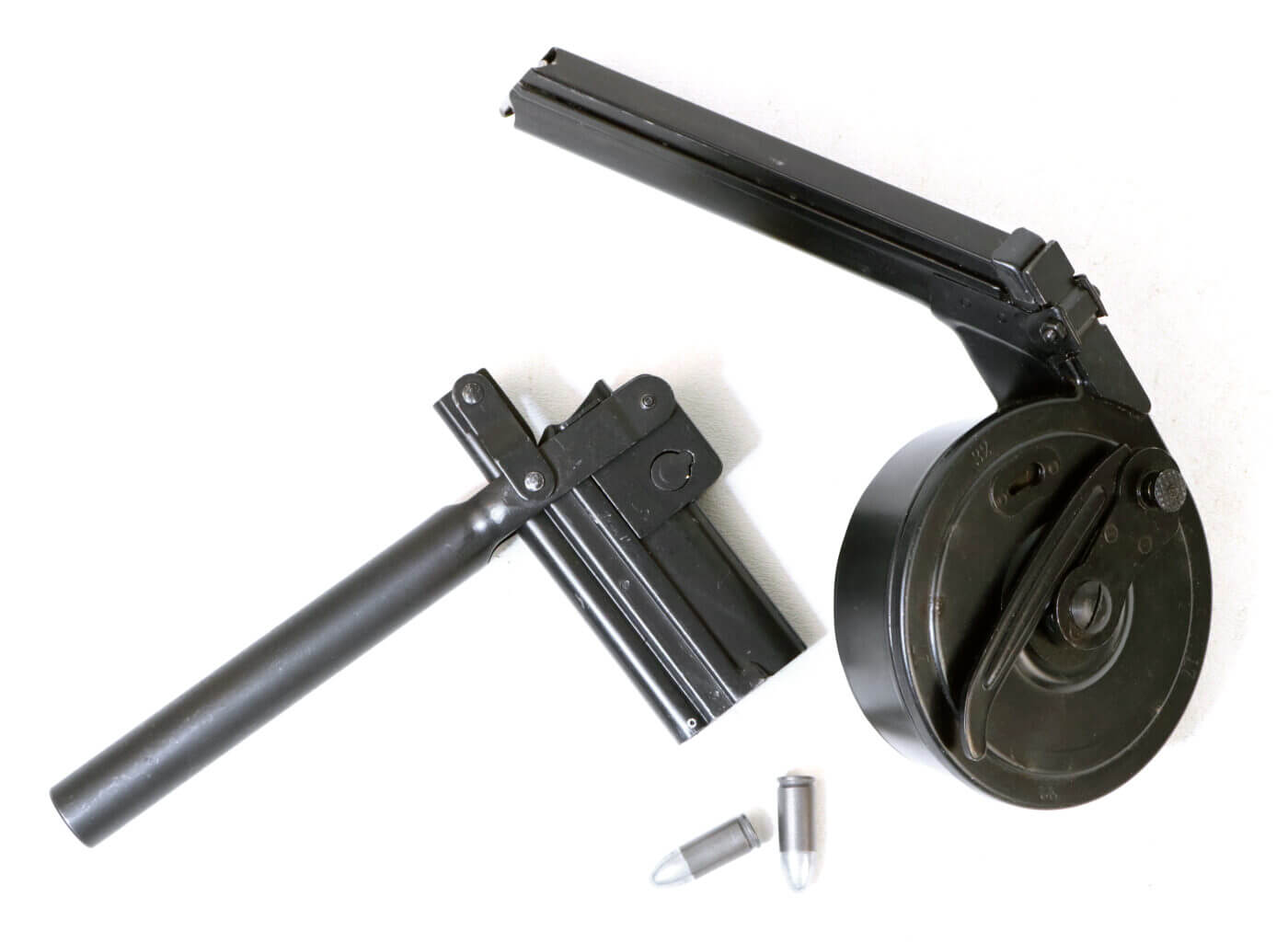
The Artillery Luger came equipped with a complicated 32-round snail drum called the Trommelmagazin that substantially enhanced the gun’s onboard firepower. The Trommelmagazin was effective enough in action, but it required a dedicated loading tool that was almost as complex as the magazine itself.
Artillery Lugers were typically issued along with a wooden storage box called a P-Kasten. This case carried five drum magazines as well as the magazine loader and twelve boxes of ammunition. Complete versions of this kit are rarer than honest politicians these days.
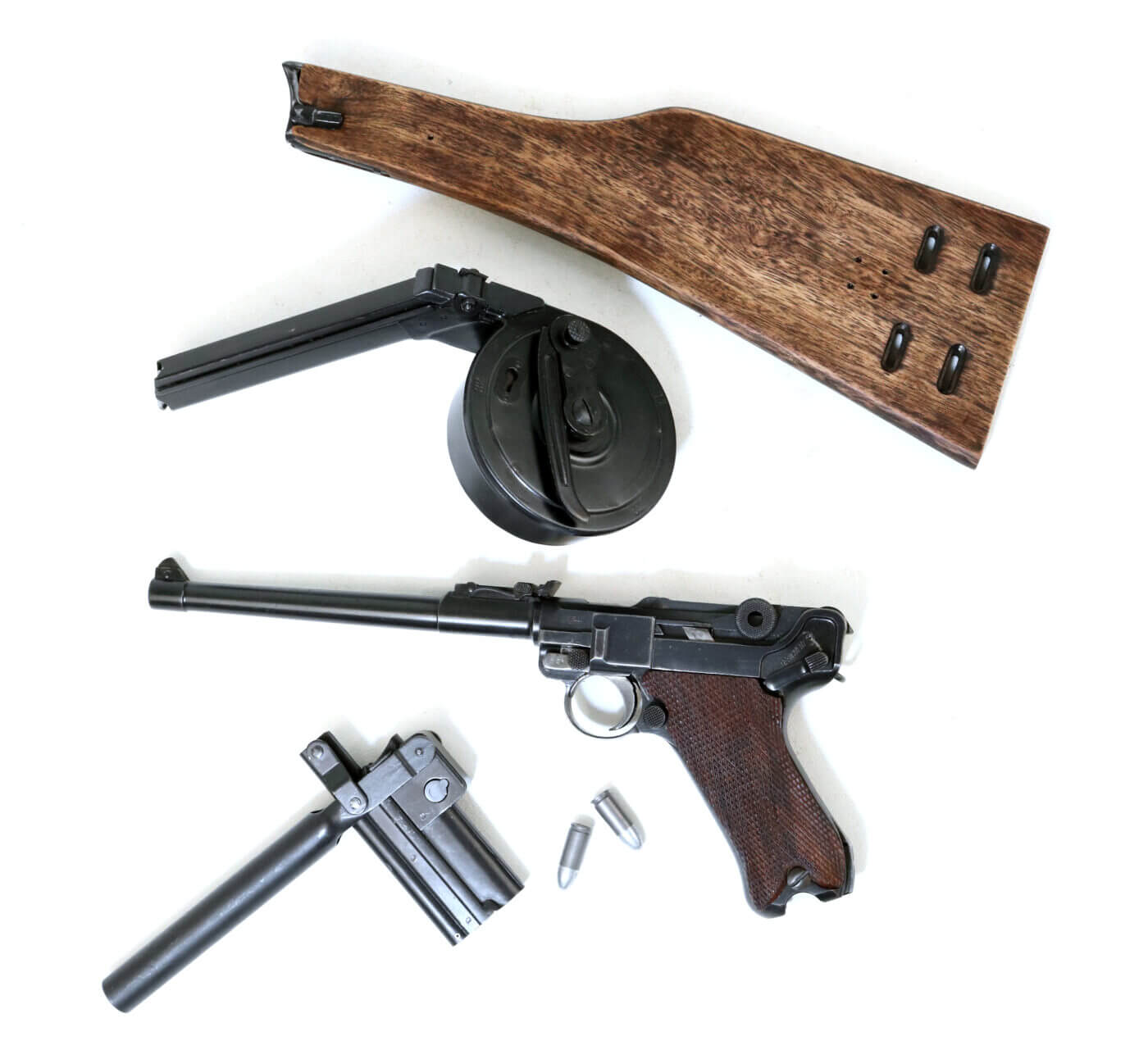
The resulting nifty little carbine caught the eye of lots of folks other than artillerymen. Before Antony Fokker perfected his synchronization gear allowing belt-fed machineguns to fire through a propeller arc, Artillery Lugers were sought after by early German aviators. The Germans actually conducted tests to determine if the 9mm Parabellum round was effective when fired against a running aeroplane engine (it wasn’t terribly).
The Lange Pistole also saw widespread use by the Imperial Stormtroopers who specialized in close quarters operations later in the war (to learn more about “Trench Raiders” of World War I, click here). The weapon’s compact dimensions made maneuvering among hostile trenches an easier chore than might be the case with a full-sized infantry rifle. Waffen SS troops even used the Artillery Luger in a limited fashion during the Second World War as well.
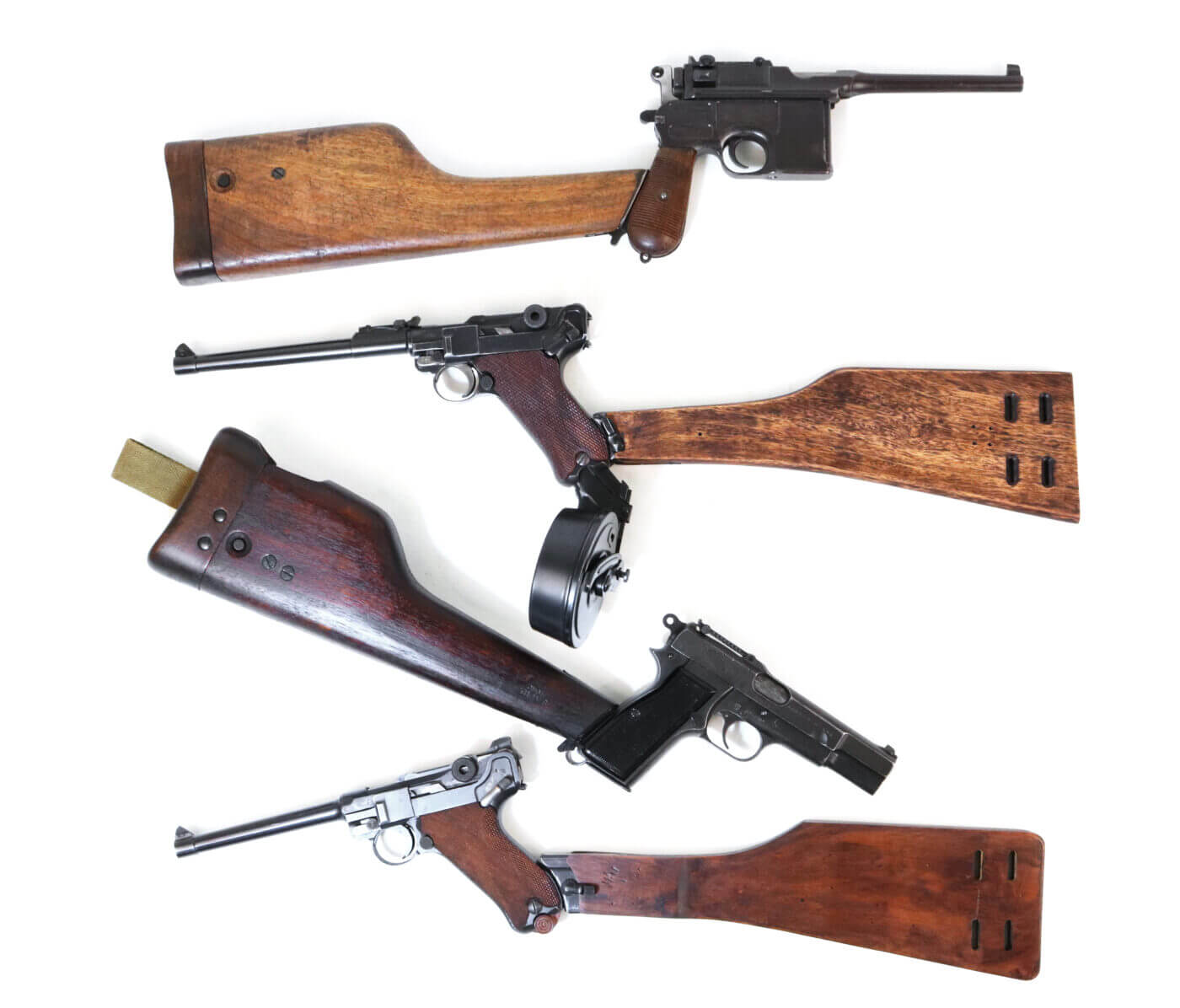
A Sprinkling of Human Anatomy
You can take an unloaded example of Georg Luger’s Parabellum pistol, press the muzzle against a firm surface, and observe the man’s inimitable genius. The action was inspired by the mechanics of the human knee. A recoil-driven design, as the barrel assembly cycles backwards upon firing the cam built into the frame pitches the toggle up and open, with the force required to “bend the knee” keeping the action closed long enough for safe operation.
This movement unlocks the gun’s bolt and allows it to cycle backwards to extract and eject a spent case. A coil spring in the butt shoves everything forward again to repeat the sequence. The exposed nature of the design left it susceptible to battlefield grime, but the gun was nonetheless a revolutionary advance over the revolvers against which it competed during its development.
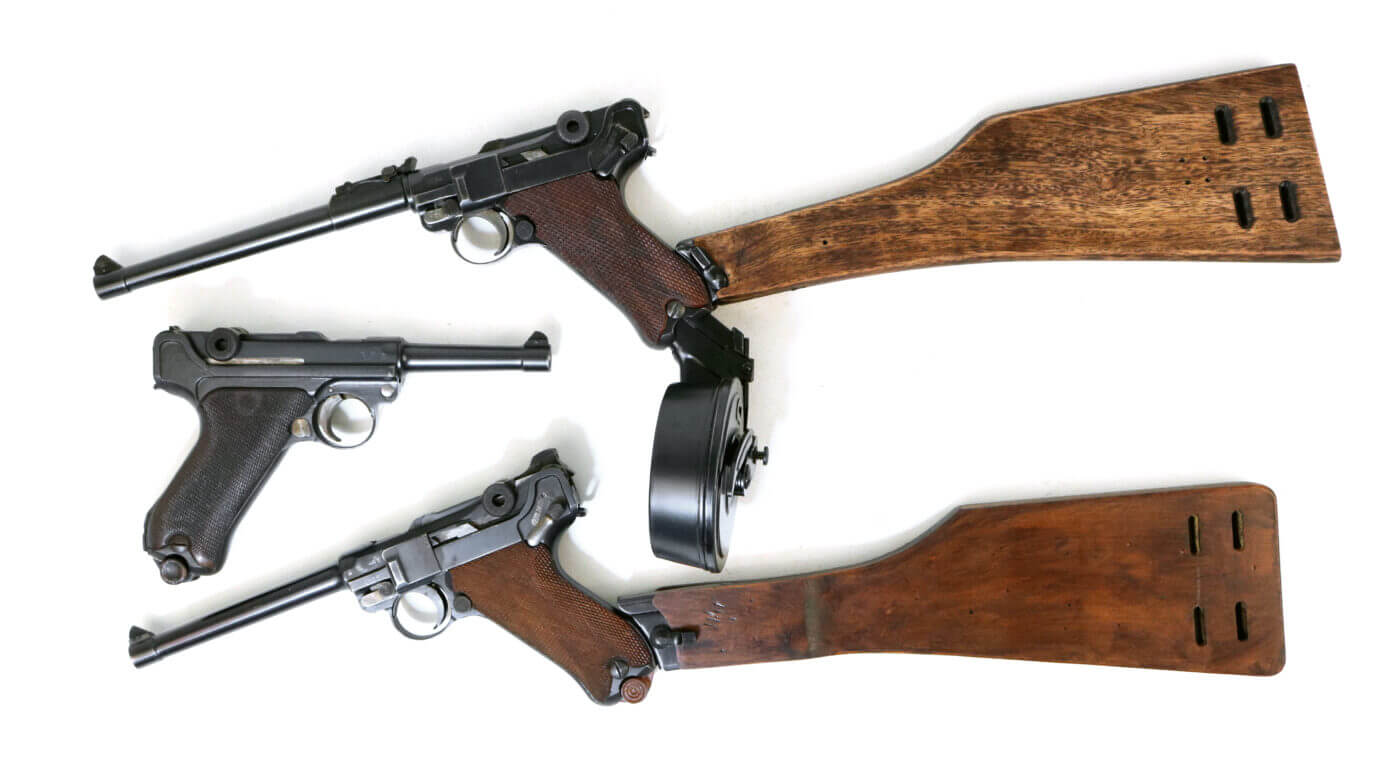
Practical Tactical
The magazine release on the Parabellum pistol is underneath the right thumb where it should be, and the toggle action is comparably accessible with either hand. The safety is a thumb lever on the left. Forward is fire. Magazines do not typically drop free but do include a dimpled wooden floorplate to aid their extraction.
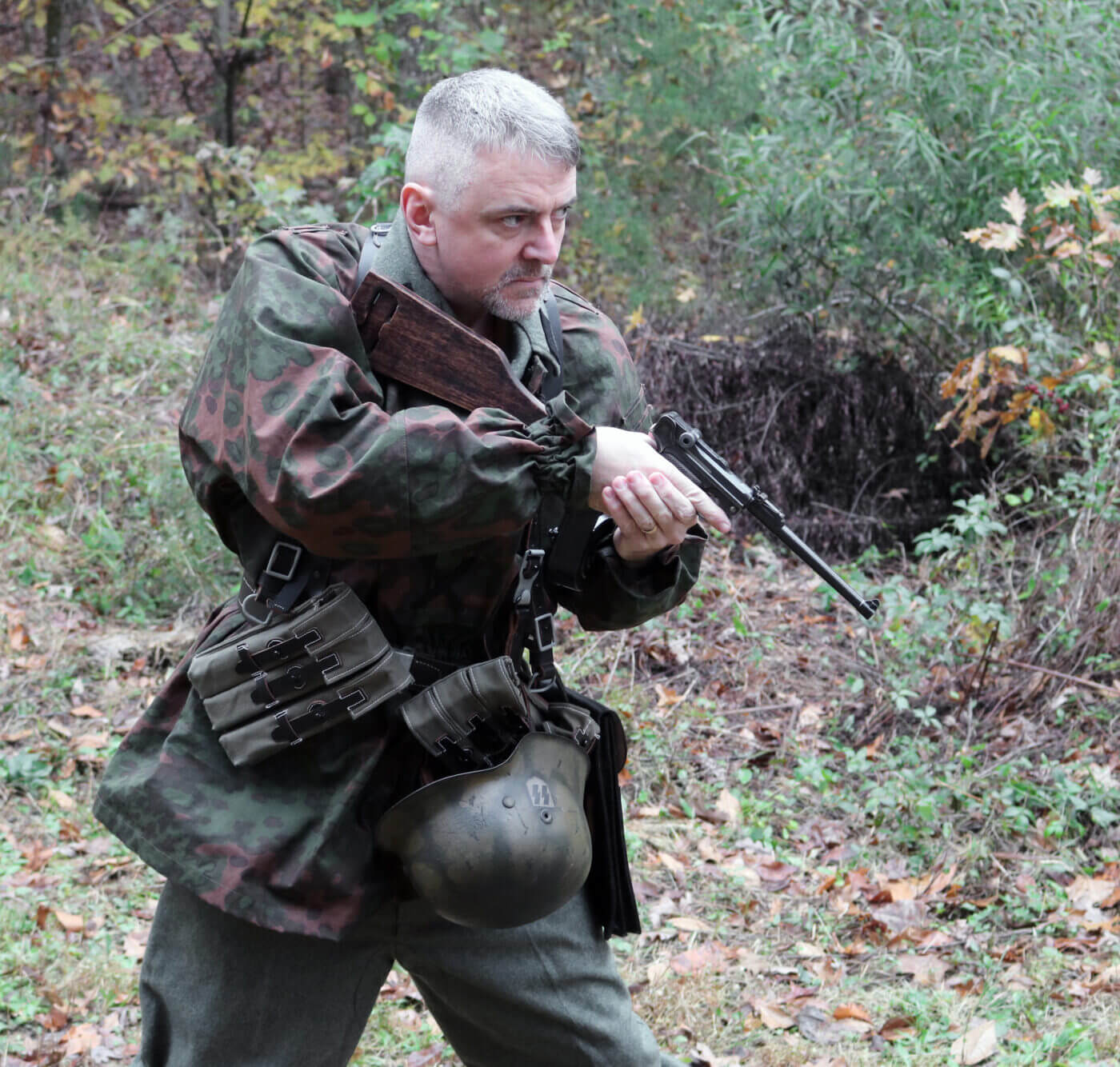
The assembled rig is fairly awkward, but it would still beat its competition in the trenches by a wide margin. While with the benefit of hindsight the Artillery Luger seems more like spy kit than an infantry combat weapon, it was an evolutionary stepping stone to later, greater things. The LP08 Artillery Luger is indeed a First World War icon.
Special thanks to www.worldwarsupply.com for the cool replica gear used in our photographs.
Editor’s Note: Please be sure to check out The Armory Life Forum, where you can comment about our daily articles, as well as just talk guns and gear. Click the “Go To Forum Thread” link below to jump in!
Join the Discussion
Continue Reading
Did you enjoy this article?

 63
63






